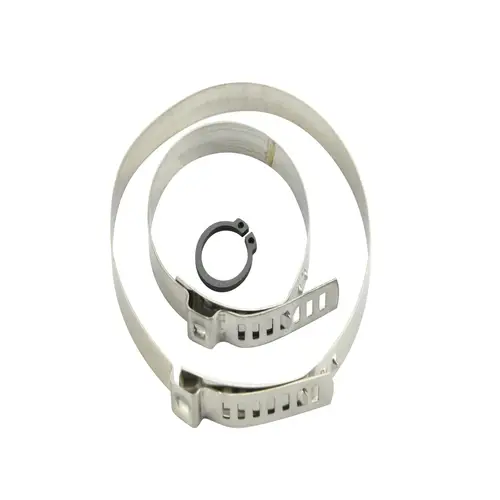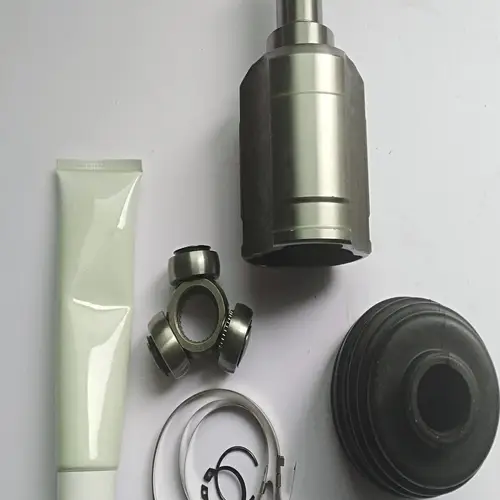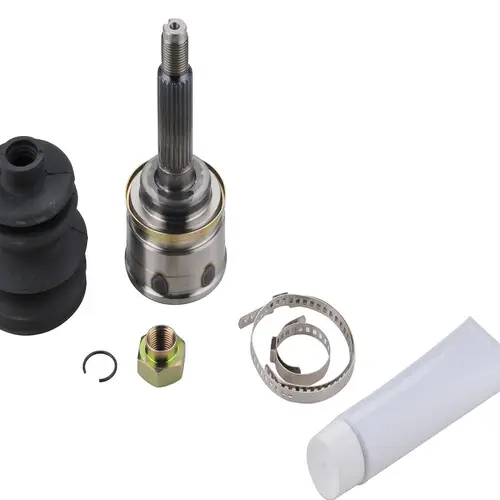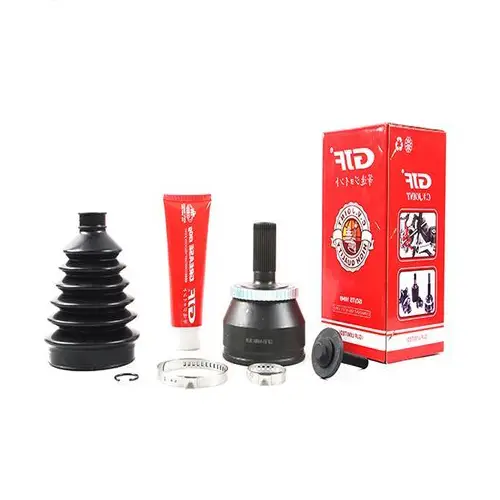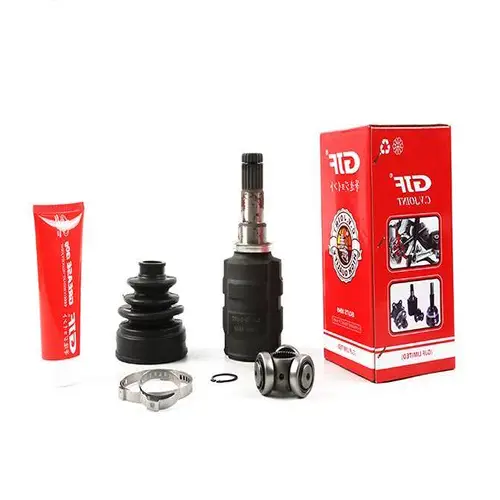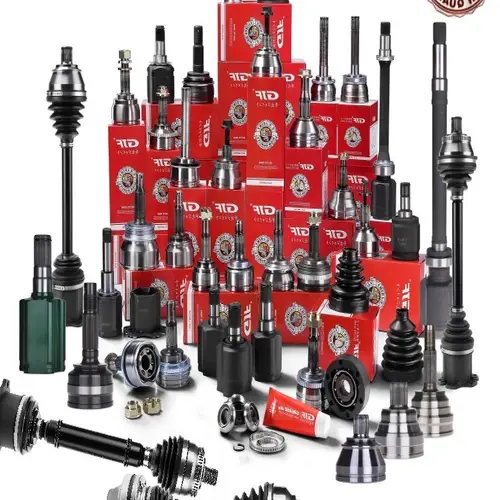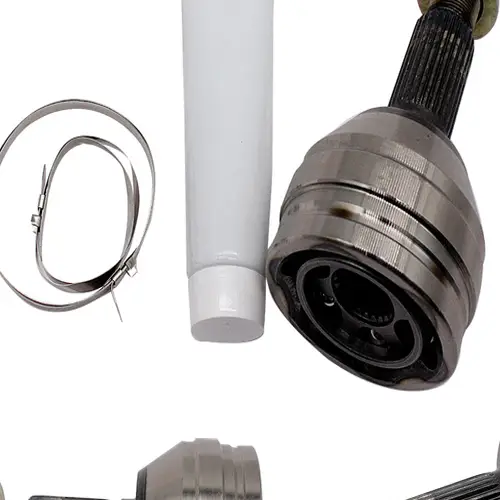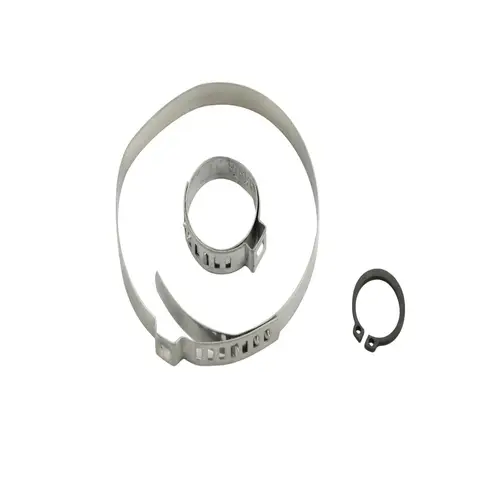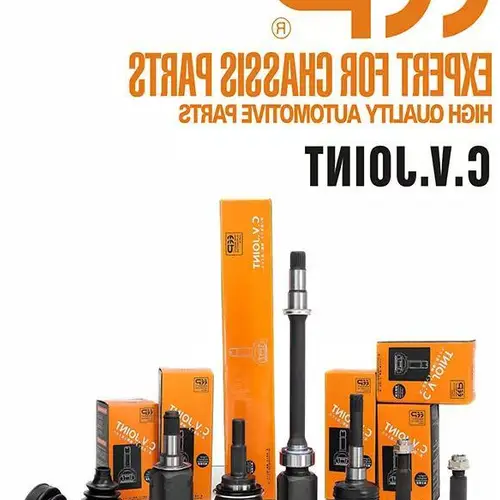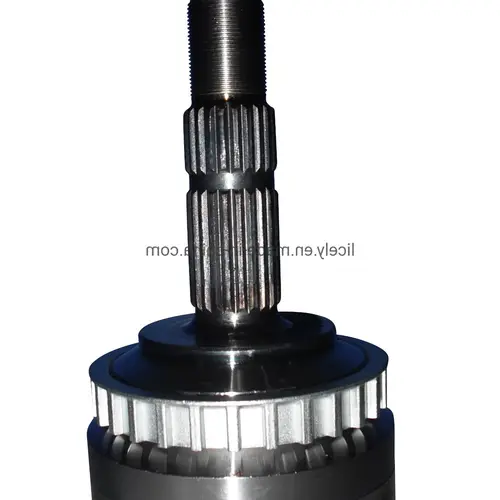
High-Quality China OEM CV Joint with ABS
Product Description
The China OEM CV Joint with ABS is designed to meet stringent OEM standards, utilizing top-tier raw materials sourced from reputable manufacturers. This ensures both durability and exceptional performance for a wide range of automotive applications. Our CV joints, also known as CV Conjunta or Juntas Homocineticas, offer reliable operation even under demanding conditions.
Product Production Standards
Our CV joints adhere to OEM standards, guaranteeing compatibility and high performance. Each component is crafted from superior-grade raw materials to assure longevity and dependability.
MOQ Request
No MOQ is required for items in stock. For customized box designs, a minimum order quantity of 2000 pieces is necessary. Orders under 200 pieces will be packaged in brown boxes with label stickers.
Warranty
We offer a 1-year warranty on all our CV joints, ensuring peace of mind and reliability for our customers.
Quality Control
All our products undergo 100% inspection before packaging. Additionally, we conduct random inspections for life testing to maintain the highest quality standards.
Third-Party Testing
Our products support third-party testing, including certifications from SGS, to assure quality and compliance.
Customization
Customization options are available, including placing your logo on the product. We support personalized designs and packaging to meet specific needs.
Packaging
Products can be packaged in customized brand boxes or plain white boxes, according to client preferences.
Certificates
Our products are certified with ISO9001, ISO/TS16949, among other standards, ensuring they meet international quality norms.
Quotation Information
To receive a quotation, please provide your requirement list with the model and quantity. We will respond with an offer within 24 hours.
Lead Time
The general lead time for our CV joints is between 30 to 60 days, depending on the order specifics and customization requirements.
Other Products
EVER-POWER GROUP is renowned for supplying a variety of high-quality industrial products. Our offerings include agricultural gearboxes, power output shafts, sprockets, fluid couplings, worm gear reducers, gears and racks, roller chains, pulleys, and planetary gearboxes. We also provide timing pulleys and bushings. We emphasize top-notch quality, competitive pricing, and exceptional customer service. Custom drawings and samples are welcomed to meet specific customer requirements.
FAQs
- What are the production standards for the CV joints? Our CV joints adhere to OEM standards and are crafted from top-tier raw materials.
- Is there a MOQ requirement for orders? No MOQ for stock items, but 2000 pieces are needed for custom designs.
- Does your company support product customization? Yes, we support various customization options, including logo placement on products.
- What is the warranty period for your CV joints? We offer a 1-year warranty on all our CV joints.
- Can your products undergo third-party testing? Yes, our products support third-party testing, including SGS certification.
All the content of the page is from the Internet, the content is only as a reference for product selection, our products are replacement parts and not original spare parts; we are not the holder of the original trademarks of the content, our products are only suitable for after-sales replacement parts and not original spare parts, our replacement parts can be perfectly adapted to the original spare parts; if you need to buy original spare parts, please contact the original factory to buy. If you want to buy original spare parts, please contact the original supplier for purchase.
Performance Characteristics of CV Joint
Constant Velocity (CV) joints are crucial components in automotive drivetrains, providing seamless power transfer while allowing for a wide range of motion. These joints perform exceptionally well due to their unique attributes:
- Smooth Power Transmission: CV joints ensure uniform power delivery to the wheels, reducing vibrations and increasing vehicle stability.
- High Durability: Made from robust materials, CV joints can withstand substantial stress and wear, ensuring long-term reliability.
- Flexibility: These joints allow for the necessary flexibility in the drivetrain, accommodating the up and down movements of the suspension.
- Maintenance Requirements: Regular inspection and lubrication can significantly prolong the life of CV joints, minimizing the need for frequent replacements.
Types and Characteristics of CV Joint
There are primarily two types of CV joints:
- Rzeppa Joints: Often used in front-wheel-drive vehicles, these joints provide a constant velocity ratio and are highly efficient at extreme angles.
- Tripod Joints: These are typically found at the inboard end of drive shafts and are designed to handle axial motion smoothly.
The material composition of CV joints also varies, impacting their performance and characteristics:
- Steel CV Joints: Known for their high strength and durability, steel CV joints are ideal for heavy-duty applications.
- Composite CV Joints: Lighter than steel, composite materials offer enhanced fuel efficiency without compromising performance.
- Chromoly CV Joints: These provide superior strength and resistance to wear, making them suitable for high-performance vehicles.
Application of CV Joint in Various Fields
The versatility of CV joints makes them indispensable in various fields:
- Automotive Industry: CV joints are critical in both front-wheel and rear-wheel drive vehicles, ensuring efficient power transfer and smooth operation.
- Industrial Machinery: In industrial applications, CV joints help transmit power in machinery that requires a high degree of flexibility and precision.
- Aerospace: CV joints are used in aircraft control systems, providing the necessary flexibility for complex movements.
- Marine Equipment: These joints ensure reliable power transmission in boats and ships, accommodating the movements of marine propulsion systems.
- Agricultural Equipment: In tractors and other farm machinery, CV joints accommodate the uneven terrain and dynamic movements, enhancing operational efficiency.
Future Development Trends and Opportunities for CV Joint Products
The advancement of CV joint technology is driven by the demand for better performance and sustainability:
- Material Innovation: The development of new materials, such as advanced composites and high-strength alloys, is expected to enhance the durability and efficiency of CV joints.
- Electrification: With the rise of electric vehicles, CV joints are being designed to handle the unique torque characteristics of electric drivetrains.
- Advanced Manufacturing Techniques: Techniques like 3D printing are enabling more precise and cost-effective production of CV joints.
- Sustainability: There is a growing focus on developing CV joints that are more environmentally friendly, through the use of recyclable materials and energy-efficient manufacturing processes.
How to Choose a Suitable CV Joint
Selecting the right CV joint involves several critical factors:
- Determine Application Requirements: Understand the specific needs of your application, including the type of vehicle or machinery.
- Evaluating Power Requirements: Ensure that the CV joint can handle the power output of your engine or motor.
- Check Speed and Torque Specifications: Verify that the joint meets the necessary speed and torque ratings for your application.
- Measuring the Length of the Shaft: Accurate measurements ensure proper fitment and optimal performance.
- Evaluate Connection Type: Ensure the CV joint is compatible with your existing drivetrain connections.
- Check Safety Features: Look for joints that offer additional safety features to protect against failure in extreme conditions.
Summary
CV joints play a pivotal role in the efficient operation of various mechanical systems, from automotive to industrial machinery. Understanding their performance characteristics, types, applications, and future trends can help in selecting the right CV joint for your needs. By considering factors such as application requirements, power, speed, torque, and safety features, you can ensure optimal performance and longevity of your CV joint.
Author: Dream
